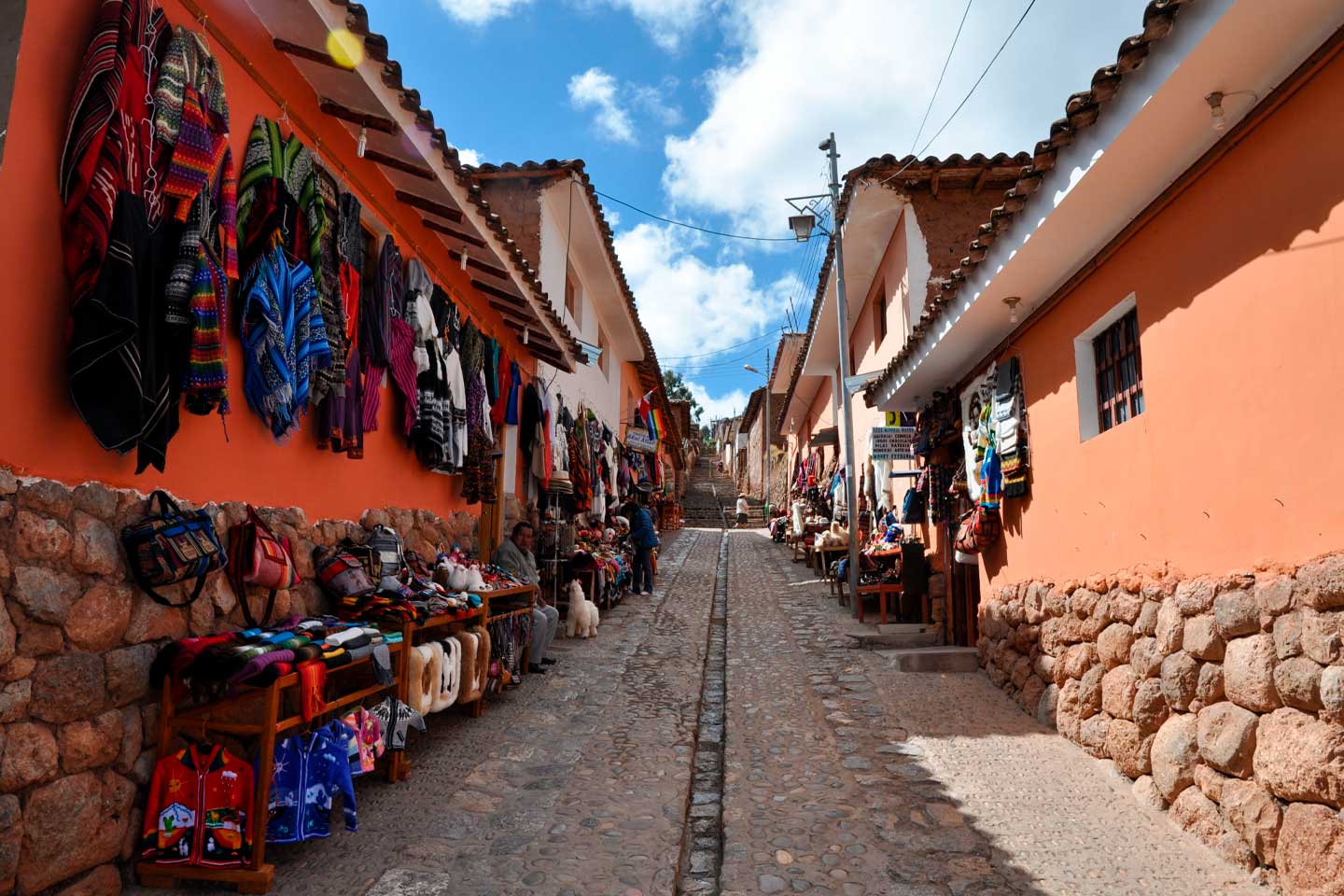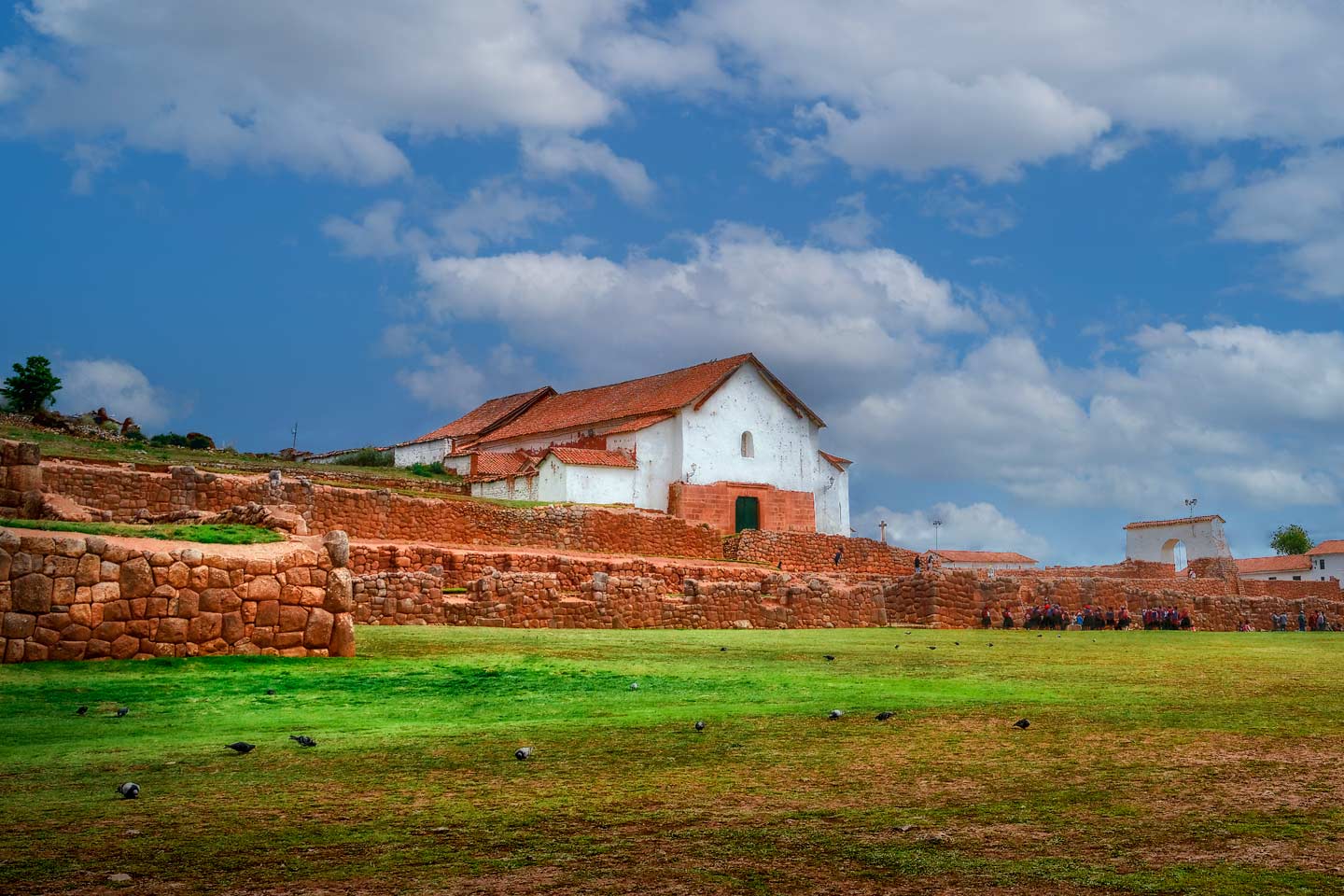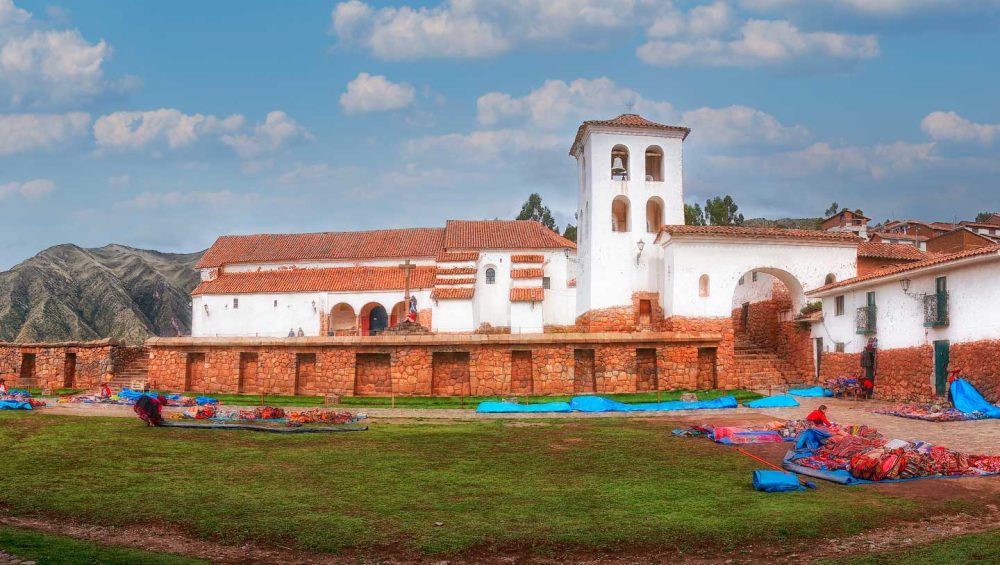Located between mountains and good valleys for growing things, Chinchero is a place that amazes with its beauty, its culture, and its history. So, if you are in Cusco and want a real experience, visiting Chinchero is a great choice. This pretty town will let you discover everything from amazing old Inca terraces to its colorful craft markets.
One of its best things to see is the main square, built on the base of an old Inca palace. There, every Sunday, a traditional fair is held, where it’s common to see the people wearing their typical clothes, a living reminder of their ancestors.
If you want to explore this hidden treasure of the Sacred Valley, come with us on a tour of the best of Chinchero: from its roots to the everyday life of its current people.
About the Town of Chinchero
Known as the “rainbow town“, Chinchero gets this nickname because of the amazing views that can especially be seen during the rainy season, between January and March. Besides its views, this town stands out as one of the most important tourist places in the region because of its rich history, culture and buildings.
The town is also home to twelve native Andean communities that keep the old “Ayllu” system, a way of social organization passed down from the Incas. The local people mostly farm native crops and raise animals, keeping a close connection with the land. However, in recent years, tourism has become very important for the local economy, bringing travelers from all over the world.
History of Chinchero
The history of Chinchero is deeply tied to the story of the Inca Empire. During that time, it was an important place for managing things and for the economy, known for having palaces and temples of the Inca nobles. Its important location and its beauty made it a special place within the Inca lands.
When the Spanish arrived in the 1500s, Chinchero changed a lot. Churches and Spanish buildings were built on top of old Inca foundations, leading to a noticeable mix of cultures.
Even though the Spanish brought new ways of organizing society and farming methods, many of the Inca customs managed to survive, being passed down from parents to children. Today, this mix of old and new has shaped the cultural identity of Chinchero, making this town a living example of the strength and ability of the Andean cultures to adapt.

Where is it and how high up is it?
Chinchero is located about 17 miles northwest of the city of Cusco, at a height of 12,342 feet above sea level. This location high in the Peruvian Andes gives it a cool and clean climate, surrounded by amazing wide views of the natural scenery around it.
Tourist Attractions of Chinchero
Chinchero has a good tourist offer that mixes history, culture, and natural beauty. Among its main attractions are the old Inca ruins, its big colonial church, and a traditional craft market. Also, natural places like Puray Lake and cultural centers like the Aclla and Kantu Textile Center make this place a must-see stop in the Cusco region.
- Palace of Túpac Yupanqui
This palace, seen as one of the most important places in Chinchero, was built in the 15th century as the home of the Inca emperor Túpac Yupanqui. Even though today only its ruins remain, its walls, still standing, show the greatness of Inca building. From this spot, visitors can also enjoy amazing views of the Andean area, making the visit a top-level cultural and historical experience. - Church of Our Lady of Montserrat
Built in the 17th century on the base of an old Inca temple, this colonial church shows a mix of Spanish building and Andean influences. Its simple outside look is different from the richness inside, decorated with murals, golden altars, and paintings of great artistic value. - Archaeological Complex of Chinchero
Located on a hill with a great view of the Sacred Valley of the Incas, this complex was an important Inca city. Here you can see impressive farming terraces, remains of ceremonial buildings, and a wall that still amazes with its strength. Walking through this old site lets you see Inca engineering up close and understand the strategic and spiritual importance that Chinchero had in the time of the Inca Empire. - Craft Market of Chinchero
The craft Chinchero Market is one of the most real in Cusco. Colorful and full of life, it offers a varied selection of handmade products like weavings, pottery, jewelry and traditional art pieces. Many of these items are made by local artisans, making the place a great spot to buy unique souvenirs and directly support the local communities. - Puray Lake
Piuray Lagoon, located near Chinchero, is a vital source for Cusco, as it provides 42% of the city’s drinking water. Its importance goes back to Inca times, when its waters were channeled through an advanced water system. Today, Piuray is a great place to do sports like kayaking, stand-up paddleboarding, biking, and hiking. Its surroundings offer amazing landscapes, with views of the snowy peaks Soray, Verónica, and Salkantay, as well as potato and quinoa fields. - Aclla and Kantu Textile Center
This center is a space dedicated to keeping and sharing the traditional textile art of Chinchero. Here, visitors can learn closely about the old techniques of weaving and natural dyeing, which have been passed down from generation to generation. The artisans share their knowledge and skills in interactive shows that let you appreciate the creative process. Also, you can buy real pieces, thus supporting the local economy and the cultural heritage of the community.
How to Get to Chinchero?
Getting to Chinchero from the city of Cusco is easy and offers several choices to fit different ways of traveling. The distance between both places is about 17 miles, which is a trip of between 40 and 60 minutes, depending on traffic and the way you choose to travel.
A good and cheap choice is to take public transportation, like the buses or minivans that leave from the Avenida Grau area in Cusco. These vehicles leave often and will drop you off in the town of Chinchero for a low cost.
But, if you want more comfort and speed, you can choose a taxi or private service, which is great if you are traveling in a group or don’t have much time. Another very popular choice is to hire an organized tour from Cusco. These packages usually include transportation to and from, entrance tickets, and a tour guide who gives useful information during the whole trip. Many tours also combine a visit to Chinchero with other nearby places in the Sacred Valley, like Moray and the Salt Mines of Maras.
Also, if you are in Urubamba, you can easily get to Chinchero by bus or minivan in a trip of about 30 minutes. This choice is helpful if you are traveling through the Sacred Valley in stages.

Local Food of Chinchero
Besides its landscapes and important old sites, Chinchero offers visitors a great chance to enjoy the real food of Cusco. One of the best places to have this experience is the local market. Among the most popular dishes of the place are fried guinea pig, crispy on the outside and juicy on the inside; fried trout, fresh and from nearby lakes; and pork cracklings, served with large corn kernels and its Creole sauce. Also, you should know that these delicious foods are made with local ingredients from the Cusco region.
To complete the food experience, nothing is better than having a glass of chicha de jora with your meal, an old drink made from fermented corn, highly valued in the times of the Inca Empire (it is also used during the Inti Raymi festival) and still present in the daily life of the Andean towns.
Tips for Visiting Chinchero
To get the most out of your visit to the town of Chinchero and its tourist spots, it’s good to keep in mind some helpful tips:
- Warm clothes and layers: Chinchero is about 12,500 feet above sea level, which makes the weather change a lot. During the day the sun can be strong, but the nights are cold, so it’s good to bring warm clothes and also a light change to handle the temperature changes.
- Sun and bug protection: Because of the high place, the sun is very strong. Don’t forget sunscreen, sunglasses, and a hat. In the rainy season, there are often mosquitoes, so good bug spray is also important.
- Cash in local money: Many shops and craftspeople don’t take cards, so bring enough money in soles for buying things, tickets, or local services.
- Respect for culture and nature: Chinchero is a place with deep historical and spiritual value. Respect local customs, holy areas, and help protect the natural surroundings by not leaving trash or harming the plants and animals.
What is the best time to visit the rainbow town?
Chinchero is a place you can enjoy all year round. Each season offers a different experience, whether because of the weather, the scenery, or the local festivals. However, choosing the best time to visit will depend on what the traveler likes and expects.
The dry season, which goes from May to September, is seen as the best for tourism. During these months, the weather is more stable, with clear skies, sunny days, and very little rain. These conditions let you easily walk around the old sites, enjoy the wide views of the Andes, explore the textile centers, and learn closely about the lives of its people.
On the other hand, the rainy season, which is from December to March, paints the landscapes of Chinchero a deep green. The rains, even though they are common and sometimes heavy, bring life to the fields, the mountains, and the country roads. The rains also create seasonal waterfalls and make the beauty of nearby lagoons like Piuray even better.

